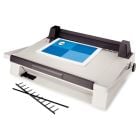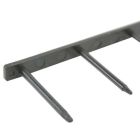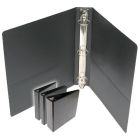Producing and Binding High Quality Training Manuals
The process of hiring and training new employees is time-consuming and expensive. Once you have found and hired new employees, training them as quickly and completely as possible is critical to maximizing productivity and profitability. One of the best ways to ensure consistent, quality training and orientation for all employees-new and old-is through the use of high quality training manuals.
Quality training manuals work as a guide for training as it takes place and as a reference for new employees when questions arise. Training manuals should focus on information that is relevant to the responsibilities of the employees and on key business objectives. Your employees should be educated on the goals of the business and precisely how they will contribute to those goals.
During training, employees can follow along with their trainer as they work through training manuals and employee handbooks, but once they actually get to work, they often have questions that arise on the job. In order to ensure the best customer service and response times, employees need to be able to get answers to questions as quickly as possible. For this reason, training materials must be carefully organized, easy to navigate and bundled in a professional style that will encourage employees to keep them.
User-friendly training materials include a table of contents describing the contents of the manual in the order in which they appear in the manual. They also have an index of key words and phrases to guide employees to just the right information. In addition to these two items, high-quality training manuals can also ensure organization and order through the use of index tabs or dividers.
Training manuals which have been bound (either using ring binders, plastic combs, spiral coil, double loop wire, Velobind, Proclick, Zipbind or Unibind) are far more professional and durable than procedural documents and handbooks which are distributed on loose-leaf or which with simple staples. Loose pages are much more likely to be misplaced and misused and stapled documents often get lost in the shuffle.
One of the most important factors to keep in mind when it comes to binding methods for training materials is update frequency. If you update your training materials often by adding or deleting pages or chapters, you may prefer to use ring binders and distribute selected updated pages to employees so that you are not forced to reproduce entire documents for the whole staff. For documents that won't be updated as much or that will have to be reprinted entirely, plastic combs, spiral coil, double loop wire, Velobind, Proclick, Zipbind or Unibind would be more appropriate choices.
In conjunction with binding, you can organize your training manuals and employee guides into tabbed sections, making it simple for employees to quickly access key sections of the documents. Tabs may be numbered or labeled with text to aid to help staff members rapidly find the information they need.
As all business owners know, time is money, and well-designed, high-quality training manuals are created with that truth in mind. Manuals should be structured in ways that enhance understanding and ensure quick and easy navigation for busy employees.









